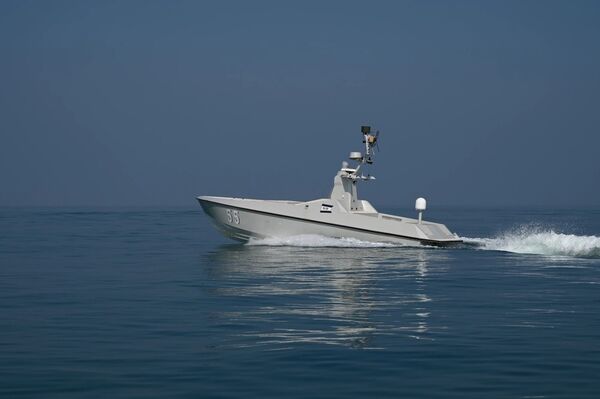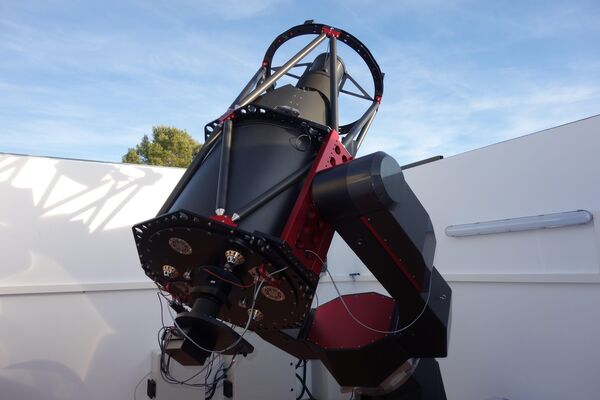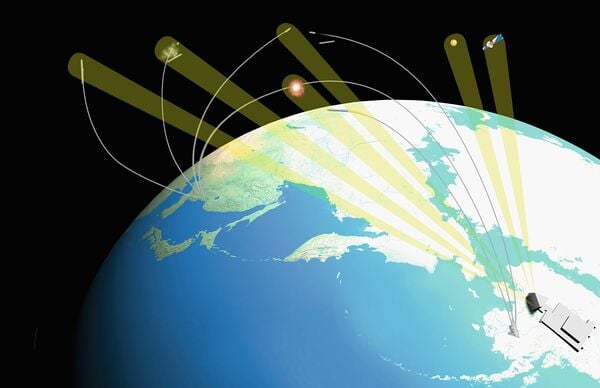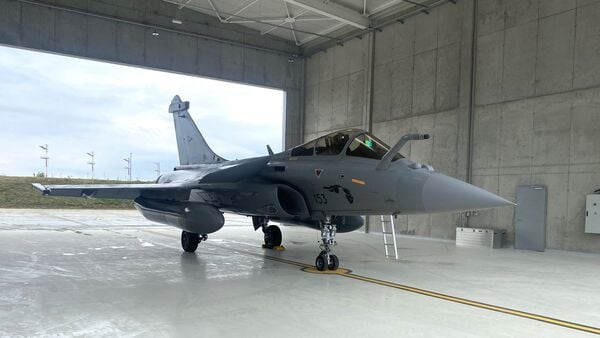- About
- Intara
- Capabilities
- Advisory
- Resources
- News
- Store
Unmanned systems begin to dominate military operations in Gulf
01 December 2023
by Michael Fabey


The US Navy conducted another exercise in the Gulf using unmanned systems such as the MAST-13 USV. (US Navy)
Recent events underscore how military operators are beginning to increasingly test and deploy unmanned systems in the Gulf.
US Naval Forces Central Command (NAVCENT) utilised Freedom-class littoral combat ship USS Indianapolis (LCS 17) as a staging base and command centre on 27 November for a host of unmanned systems during live weapons firing exercises in the international waters of the central Gulf, US Navy (USN) officials confirmed.
The operations took place during Exercise ‘Digital Talon 2.0', the second of its type in as many months. The exercise featured “manned-unmanned teaming” by integrating Indianapolis , three unmanned surface vehicles, and an unmanned aerial vehicle (UAV) to create a single common operating picture and what is known as a “mesh network” providing targeting data to all stations taking part in the exercise, USN officials said in a statement.
On 28 November “Iranian unmanned aircraft took unsafe and unprofessional actions near USS Dwight D Eisenhower (CVN 69) (IKE) during routine flight operations in international waters,” US NAVCENT officials said.
UK explores new radar and IR tech to enhance SDA
26 April 2024
by Olivia Savage


UK company Spaceflux has been contracted to develop and operate a ground-based SDA sensor as part of Project Nyx Alpha to monitor objects in GEO for UK Space Command. (Spaceflux)
The UK's Defence Science and Technology Laboratory (Dstl) is conducting three technology demonstrator programmes to explore the utility of novel space domain awareness (SDA) technologies.
The first programme is exploring the development of a Deep Space Radar (DSR) designed to monitor and protect geostationary orbit (GEO) assets such as the Skynet satellite communications system, William Feline, senior principal advisor for SDA at the UK Ministry of Defence (MoD), said at the Military Space Situational Awareness Conference 2024, held in London from 22 to 24 April.
The purpose of the programme is also to assess whether the UK needs its own DSR capability or whether it can rely on or complement the Deep Space Advanced Radar Capability (DARC) currently being developed alongside Australia and the US, Emma Kerr, senior principal engineer for SDA at Dstl told Janes .
A monostatic or biostatic system is being considered as well as whether a new or existing system is required, Feline said.
MDA, Lockheed Martin seek ‘final transition' of LRDR
26 April 2024
by Carlo Munoz


An artist's concept of how Lockheed Martin's LRDR would detect ballistic missile launches from Asia. The radar completed preliminary design review in March and will go through critical design review in September 2027. (Lockheed Martin)
The Pentagon's Missile Defense Agency (MDA) and its industry counterparts at Lockheed Martin are preparing for the ‘final transition' of the long-awaited Long Range Discrimination Radar (LRDR) to the US armed forces in the Indo-Pacific region.
LRDR programme officials officially transitioned control of the S-band missile defence radar to the MDA on 23 April, according to a company statement. The handover of the system, currently stationed at Clear Space Force Station in Alaska, will allow agency officials to finalise the Operational Capability Baseline (OCB) milestone, which is the final stage before the LRDR is handed over to US Space Force (USSF) units. “Prior to this transition, the system has started space domain awareness data collects” for USSF units, the 23 April statement said.
Rafale enters Croatian service
26 April 2024
by Gareth Jennings


One of the first six Rafales to be delivered to Croatia. Deliveries of all 12 aircraft will be complete by mid-2025. (Dassault)
Croatia has inducted into service the Dassault Rafale combat aircraft it recently received from France.
The manufacturer announced the milestone on 25 April, saying the first six of 12 Rafales had been formally received into service by the Croatian Air Force (Hrvatsko ratno zrakoplovstvo i protuzračna obrana: HRZ i PZO).
Having been handed over to the Croatian Ministry of Defence (MoD) at the French Air and Space Force (Armée de l'Air et de l'Espace: AAE) base at Mont-de-Marsan in France in 2023, these initial aircraft were received into the 91 operational base near Zagreb in a ceremony that was attended by Croation Prime Minister Andrej Plenković and Minister of Defence Ivan Anušić.
With the Rafale to be operated by 191 Squadron, the first of the follow-on batch of six aircraft will arrive in Croatia by the end of 2024 to complete the unit by mid-2025.
For more information on the Croatian Air Force, please seeCroatia – Air Force .
Recent events underscore how military operators are beginning to increasingly test and deploy unmann...
Latest Podcasts
Iran Israel analysis
In this podcast Janes analysts discuss the Iranian attacks on Israel on the 14 April. They highlight the military systems used by Iran and the performance and impact of these on Israel. They also discuss the implications of this attack goi...
Listen nowJanes Case Studies
Using Janes Intara to build a common intelligence picture: Russian build up on the Ukrainian border
View Case StudyNews Categories
 Sea Details
Sea Details